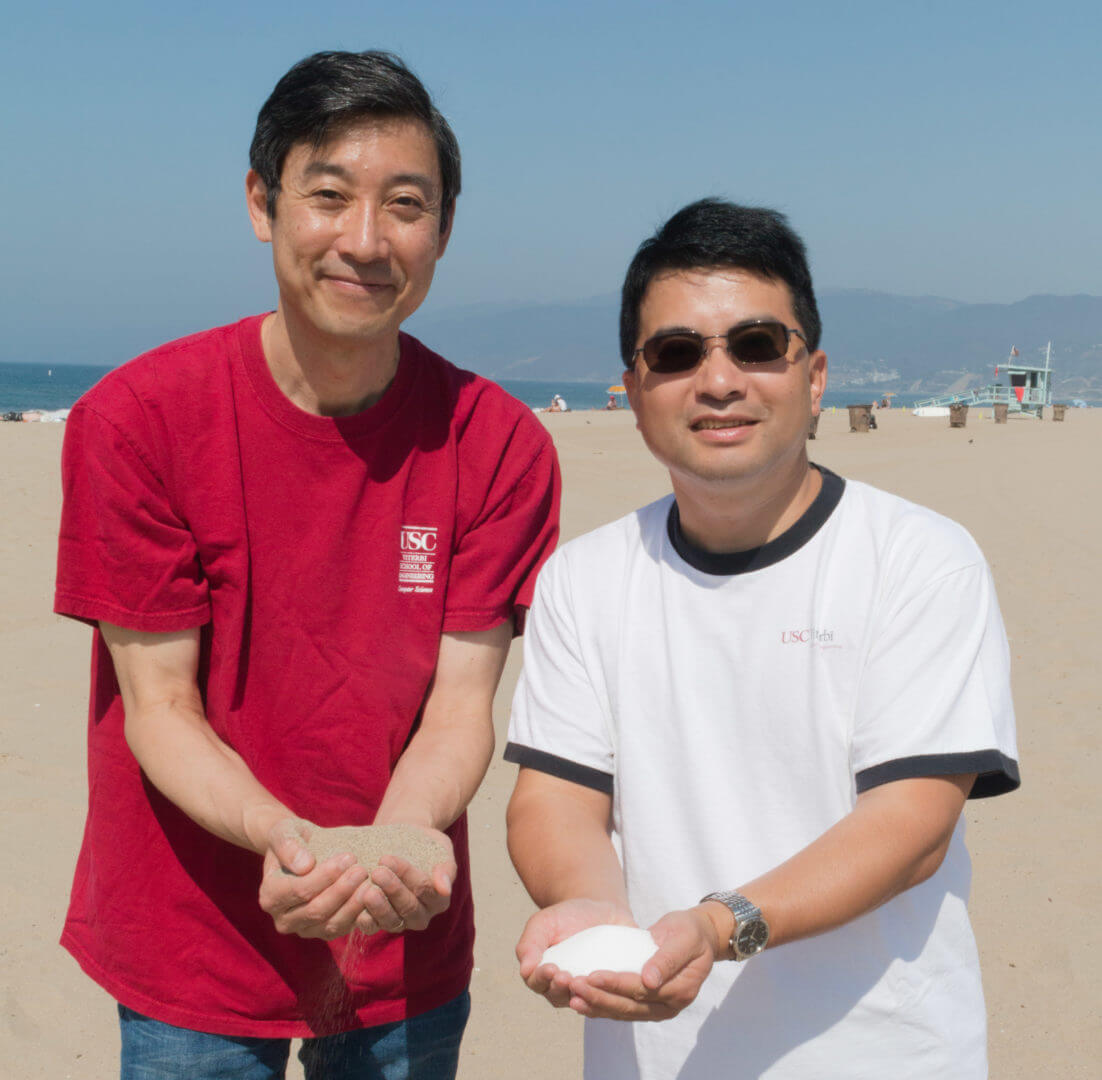Salt and Sand
Salt and sand: two common, cheap and downright boring materials found in abundance at any Southern California beach. They aren’t as flashy as gold, as intimidating as uranium or as life-sustaining as that periodic prima donna, oxygen. But cheap abundance is exactly what makes them so groundbreaking in the work of two USC Viterbi professors.
Salt – Sodium (Na)
Chongwu Zhou, USC Viterbi professor of electrical engineering, uses sodium to make cellphone batteries cheaper and cleaner. Current cellphone technology uses graphite to store lithium, which acts as the power source. Researchers have long known that sodium could be a better option than lithium, but sodium ions are too large to be stored in graphite. Zhou, along with doctoral student Yihang Liu, has succeeded in building a sodium-friendly storage unit out of red phosphorous placed on graphene sheets. Recently published in ACS Nano, their groundbreaking, wave-like design is the key innovation that is bringing practical sodium ion batteries into reality.
Sodium is better in a lot of ways. It is much cleaner than lithium, which contributes heavily to climate change and pollution. Because of its abundance, sodium is also cheaper than lithium, which must be mined. And, in what millennials might call the greatest scientific achievement known to man, Zhou’s sodium ion battery can be charged to 50 percent capacity in just two minutes!
“Imagine being able to walk right up to the ocean just a few miles from here and get all the salt you need to manufacture all the world’s cellphone batteries,” Liu said.
The next step for Zhou and his team is to improve the performance and life of their battery so they can bring it to market. But don’t get all salty just because this new battery isn’t ready yet — commercial sodium ion batteries are coming in the foreseeable future.
Sand – Silica (SiO2)
Aiichiro Nakano, USC Viterbi professor of computer science, loves pressure. Nakano and his colleagues at USC and in Japan and Germany are taking silica, which is found in abundance in sand, and putting it under extreme pressure to create a new ceramic. Their goal is to create new materials with qualities that could change our lives in many ways. The team’s work was recently published in the journal “Science Advances” and is funded by the U.S. Department of Energy.
This material is strong enough to withstand impact but is not brittle. Because it’s made cheaply out of pressurized silicon, it is a unique material, indeed. But that’s only the start of what makes Nakano’s material special. This ceramic is actually made up of tiny grains called nano-polycrystalline stishovites (NPS). “When the material does eventually crack or tear, these little grains pop like popcorn, effectively sealing and repairing the break,” Nakano explained.
The end product, which is stronger, cheaper, more heat-resistant and lighter than most metals, could have countless applications. Theoretically, something like a tank made entirely out of this ceramic would weigh a fraction of what it does now. Shipping costs could plummet, while vehicle fuel efficiency could skyrocket.
“All sorts of stimuli, like light, heat and electric fields, can be used to modify atoms and change materials, with infinite possibilities,” said Nakano, who is also a co-principal investigator at a DOE-supported center at USC Viterbi called MAGICS (Materials Genome Innovation for Computational Software) that uses extreme-scale supercomputing to give new life to common materials.
Thanks to these two USC Viterbi professors, salt and sand have regained their rightful place at the top of periodic pecking order. Coincidentally, Nakano was a committee member on Liu’s Ph.D. qualifying exam, where he presented his research into red phosphorous. The two shared ideas and hope to combine Nakano’s expertise in computational simulation of materials with Zhou’s work on nanomaterials in a future project. With their powers combined, who knows which element will be the next to be reimagined?




